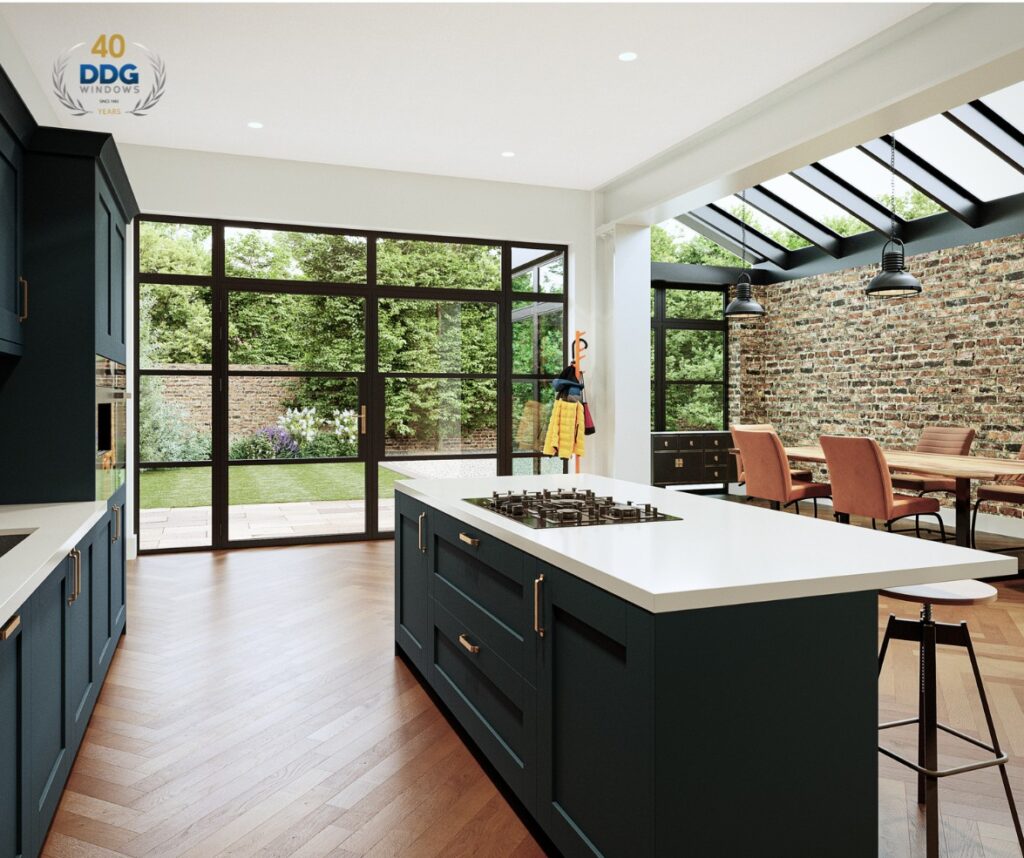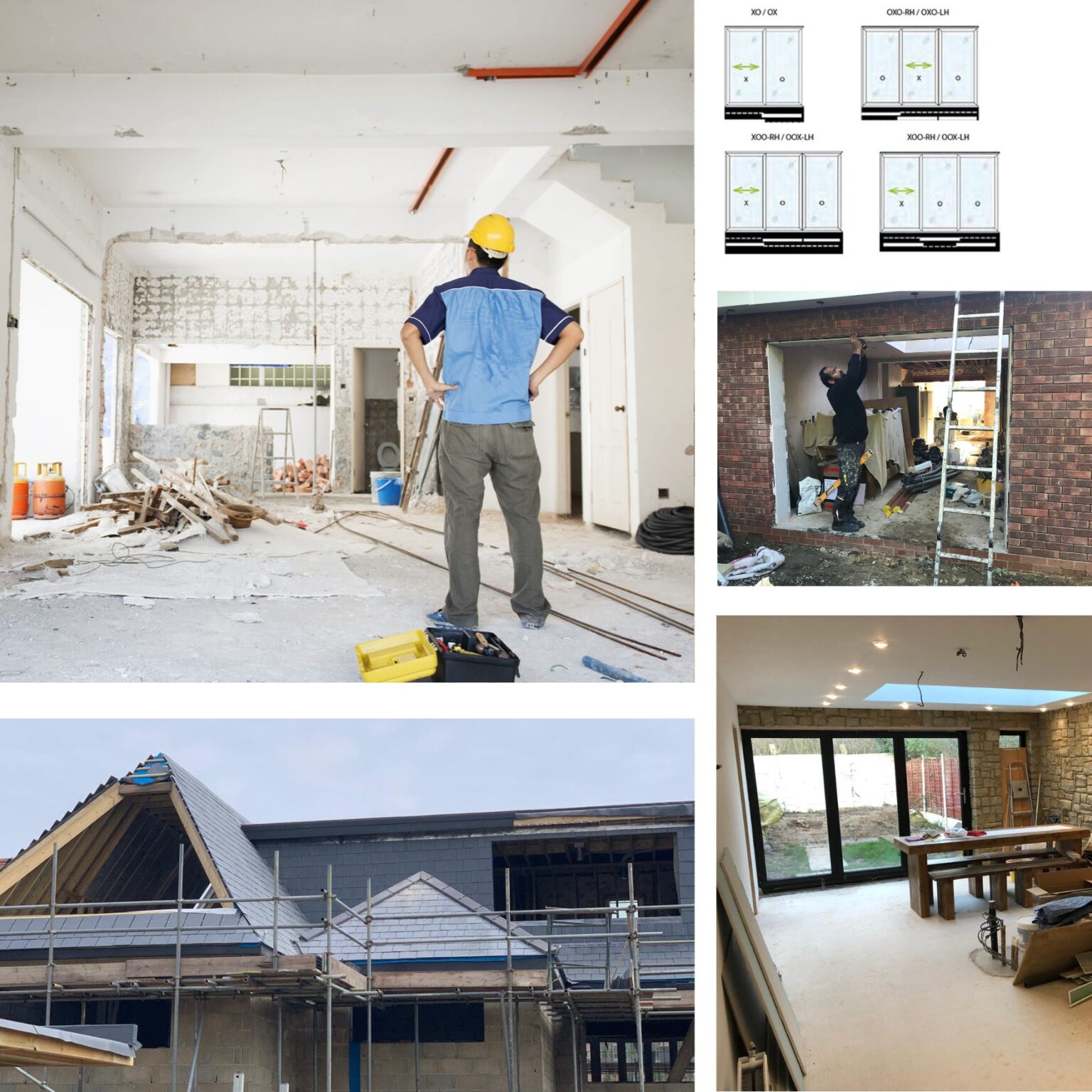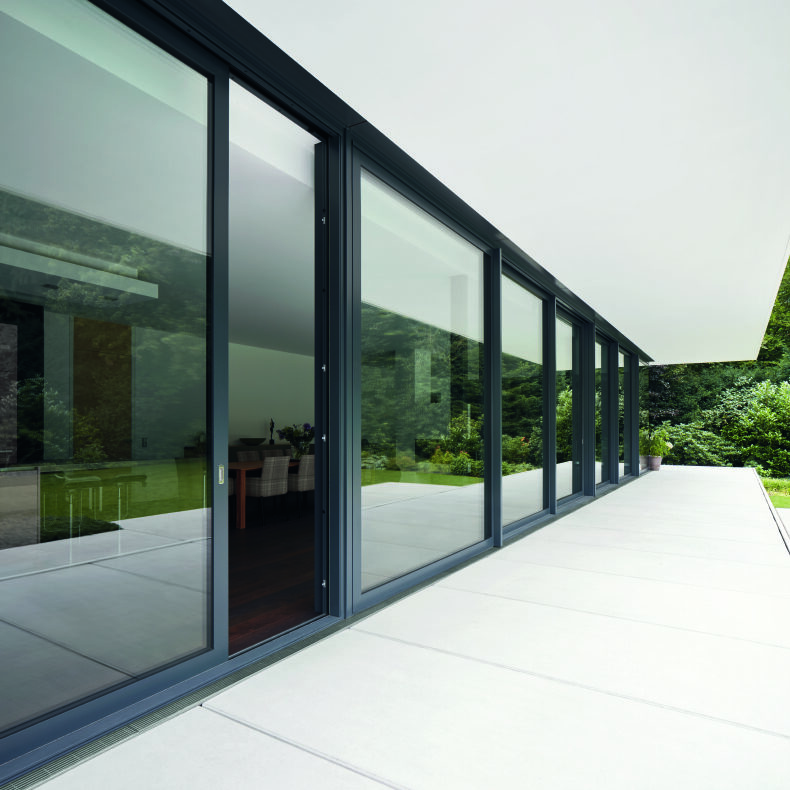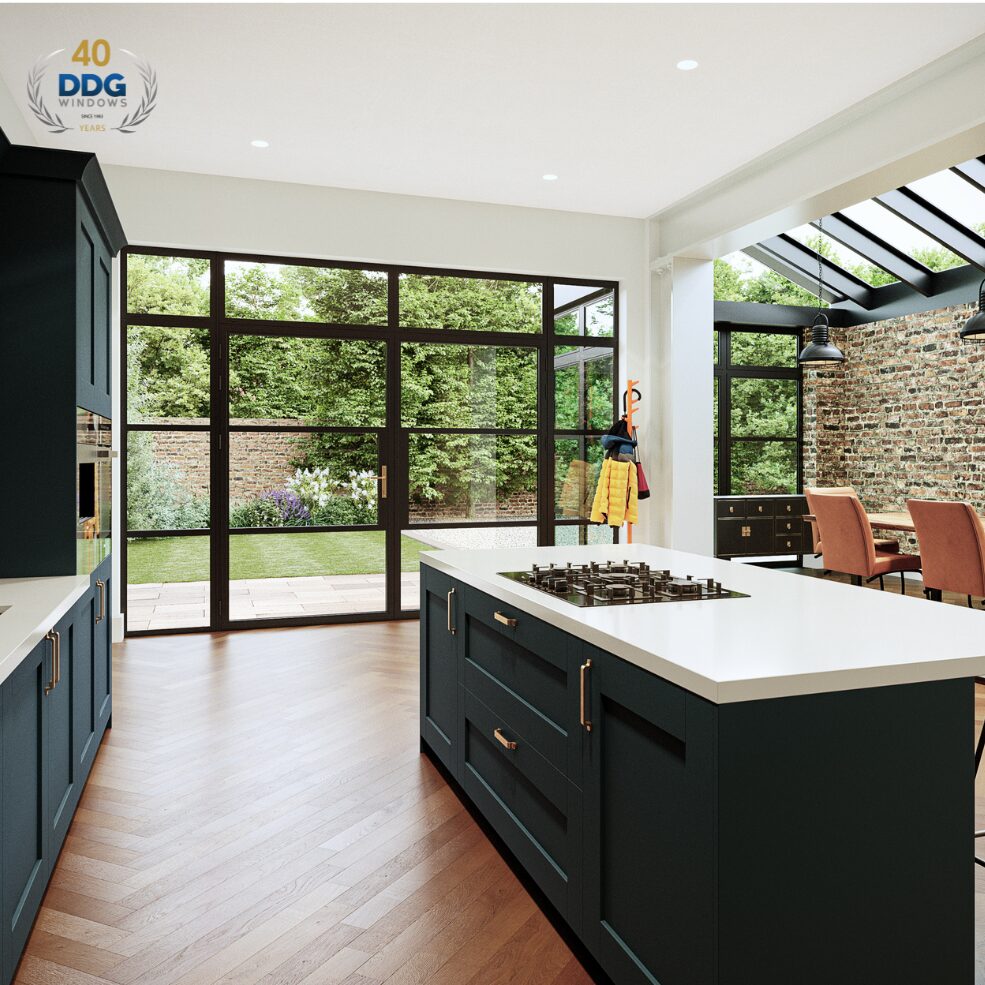07 Feb A First-Time Homeowner’s Guide to Renovating Your Property

Taking on a renovation, adding an extension, or upgrading doors and windows can feel daunting for first-time homeowners. Whether you’re adding a rear extension, replacing old windows, or creating an open-plan living space with modern features like aluminium sliding doors or uPVC windows, careful planning is key to making your dream home a reality. This guide provides practical advice to help you navigate the process, step by step.
Step 1: Evaluate Your Goals and Budget
Before jumping into a renovation project, take a step back and consider your goals. Are you creating more living space, improving energy efficiency, or modernising your home’s look? It’s also worth consulting with a local estate agent to understand how your renovation might add value to your property, particularly if you’re considering features like premium aluminium sliding doors or a stylish sky lantern for natural light. Budgeting is crucial. Establish what you’re willing to spend, and always include a 10-15% buffer for unexpected costs. For guidance, small-scale projects like replacing windows and doors will cost less than full-scale extensions, which can range between £26,000 and £50,000 depending on size and materials.
Step 2: Understand Planning and Building Requirements
Planning Permission and Permitted Development
Certain projects, such as replacing windows or adding single-storey rear extensions, may fall under “permitted development,” meaning you don’t need formal planning permission. However, larger projects like multi-storey extensions or work on a Listed Property may require approval. Check with your local council to ensure you comply with regulations.
Building Regulations
All work, from installing energy-efficient windows to building extensions, must comply with building regulations. For instance, FENSA-accredited installers can certify the installation of uPVC and aluminium windows and doors. If your builder or contractor cannot self-certify, your local Building Control Office will need to inspect and approve the work.

Step 3: Choose the Right Features and Products
When renovating, the doors and windows you choose can transform your home in terms of style, functionality, and energy efficiency. Here are some popular options:
• Aluminium Sliding Doors: Perfect for creating a seamless indoor-outdoor flow, aluminium sliding doors are durable, secure, and allow maximum natural light.
• uPVC Windows and Doors: A cost-effective and low-maintenance option, uPVC frames come in a variety of finishes and are highly energy-efficient.
• Sky Lanterns: Ideal for extensions or open-plan spaces, a sky lantern adds a striking architectural feature while flooding your home with natural light.
Pro Tip: Combining these elements in a cohesive design can add value and improve the aesthetic appeal of your home.
Step 4: Protect Your Investment
Home Insurance
Before beginning any renovation work, notify your home insurance provider about your plans. Renovations may affect your policy, especially if they increase the value of your property or introduce risks during construction. Also, ensure your builder has professional indemnity insurance in case of accidents or damage.
Party Wall Agreements
If your project involves shared walls or excavations near a neighbour’s property, you may need a Party Wall Agreement. Be proactive and communicate with your neighbours early to avoid disputes.
Step 5: Find the Right Professionals
Architects and Structural Engineers
For complex projects like extensions, an architect can help create a design tailored to your needs, while a structural engineer ensures the work meets safety standards.
Reliable Builders and Contractors
Choosing the right tradespeople is crucial. Look for trusted builders with verified reviews and industry accreditations like FENSA for window installers. Always obtain at least three quotes and ensure they include VAT and all project details to avoid surprises.



Swipe to see the amazing work
Step 6: Prepare for Installation and Building Work
Timeline and Expectations
From fitting new windows to building an extension, projects can take weeks or months. Discuss timelines with your contractor and understand the potential disruptions.
Energy Efficiency and Security
Modern aluminium and uPVC windows and doors often include advanced features like multi-point locking systems for added security and excellent thermal insulation to reduce energy bills. Upgrading to double or triple glazing can meet energy efficiency regulations and save you money long-term.
Step 7: Enjoy Your New Space
Once the dust settles, your newly renovated home will be a space that works better for your needs and lifestyle. Whether it’s entertaining friends in your light-filled extension with aluminium sliding doors or relaxing in a cozy, energy-efficient living room with sleek uPVC windows, you’ll enjoy the benefits of thoughtful planning and high-quality workmanship.
Quick Tips for First-Time Homeowners
1. Start Small: If budget is tight, prioritise upgrades like replacing old windows with uPVC or aluminium options before committing to larger projects.
2. Future-Proof Your Choices: Opt for durable, low-maintenance materials to save time and money down the road.
3. Communicate Clearly: Keep open communication with contractors, neighbours, and insurers to avoid delays and disputes.
Renovating your first home can be a transformative experience. With proper planning, the right professionals, and premium features, you’ll create a space that’s functional, beautiful, and uniquely yours.
Whether you’re starting with simple window replacements or a full-scale extension, investing in the right solutions ensures a home you’ll love for years to come. Ready to take the first step? Contact us today.


